|
Bird Watching in Your Neighborhood Park and in Your Own Backyard I'm a bird nerd. Not, by any means, an expert, but I love birds. I find them beautiful, awe-inspiring, incredible creatures. I love bird watching, and I hike often in an effort to do so. However, it's not necessary to go out into the wilderness to witness birds in their habitat. Of course, Wisconsin State Parks and trails are a great place to spot these birds, but don't count out your local neighborhood parks or your own backyard. During migration, birds fly thousands of miles from places like South America, to the United States and Canada, where they will breed, nest, and raise their young over the spring and summer. En route to these destinations, you can find them feeding and resting in green spaces all across the state of Wisconsin. If there's a park or yard with trees, bushes, a bird bath, and a pond or wetland of some sort, they will find it. Bird feeders can help, too.
Just recently I took a walk around the pond at my neighborhood park, McCarty Park, in West Allis, and was gifted with sightings of a Golden Crowned Kinglet, an Eastern Phoebe, and a Hermit Thrush. I also saw many of our more common resident birds such as American Robins, Goldfinches, Cardinals, House Sparrows, Mallard Ducks, and Canadian Geese. Inviting the Birds to Your Own Backyard
Bird watching is such a rewarding activity. It helps me to appreciate, and care about, the wildlife that surrounds me. Birds are fascinating, beautiful creatures. I love that I can watch them, and hear their song, whether in my city backyard, neighborhood park, or in wider, wilder environments. I'm humbled, and calmed, by their presence. Hopeful, too.
For more information on backyard birding, visit the Wisconsin DNR website. For information on preserving birds and other wildlife, visit the National Wildlife Federation website.
0 Comments
Your comment will be posted after it is approved.
Leave a Reply. |
AuthorA nature lover, bird watcher, wildlife fan, amateur photographer, humane gardener, traveler, and singer of songs. I've been keeping closer to home these days, and truly discovering the beauty that lies in TheParkNextDoor. Archives
May 2024
Categories |
- Home
- THE MAGAZINE
- Celebrating 10 Years
- Blog
- Support The Park Next Door
- Achievements / Press
- Art for Your Walls & More
-
Special Features
- What's New
- Blooms Galore 2024: U-Pick Sunflowers, Cut Flowers and Lavender Fields
- Peony Perfection
- 30 Easy, Scenic Nature Walks
- Gone Fishing
- Birding Local
- A Walk On The Beach
- On The Bookshelf
- There's A Camera In My Pocket
- It's Garden Party Time
- Exploring Door County
- Tasting Door County
- Local Waterfalls Are Calling
- On The Side
- Beauty On The Escarpment
- Sacred Ground & Effigy Mounds Of Wisconsin
- Legacies Of Nature
- Escape To The Woods
- Snapshots
- Migration Song - The Magic of Bird Migration
- Dog Days In The Park
- Fabulous In Fall
- Gift Ideas For The Nature Lover
- Hiking Safely During Hunting Season - 2023 Edition
- Sparkle In The Parks & More
- Winter in Wisconsin
-
Let's Explore
-
Nature Trails
>
- 116th Street - Oak Leaf Trail - West Allis, WI
- Bald Bluff Nature Trail - Palmyra, WI
- Belle Reynolds Nature Trail - Oakfield, WI
- Eagle Nature Trail - Eagle, WI
- Emma Carlin Trail - Palmyra, WI
- Glacial Drumlin State Trail - Lake Mills, WI
- Ice Age Visitor Center Nature Trail - Campbellsport, WI
- Kettle Moraine Low Prairie Natural Area - Eagle, WI
- W. Kinnickinnic River Parkway - Milwaukee, WI
- Kohl Park Hiking Trail - Milwaukee, WI
- Paradise Springs Nature Trail - Eagle, WI
- Rice Lake Nature Trail - Whitewater, WI
- Scuppernong Springs Nature Trail - Eagle, WI
- Seminary Woods - St. Francis, WI
- Stony Ridge Nature Trail - Eagle, WI
- Stute Springs Nature Trail - Eagle, WI
- Washington Avenue Nature Trail - Sheboygan, WI
- White River State Trail - Elkhorn to Dover, WI
- Wisconsin Veteran's Memorial Riverwalk - Delafield, WI
-
Local Parks
>
- Akakawaa Park - Waukesha, WI
- Alt Bauer Park - Germantown, WI
- Anclam Park - Baileys Harbor, WI
- Astico County Park - Columbus, WI
- Asylum Point Park & Lighthouse - Oshkosh, WI
- Aurelian Springs Village Park - Palmyra, WI
- Beckman Mill County Park - Beloit, WI
- Big Hill Park - Beloit, WI
- Biwer Park - New Berlin, WI
- Bluhm Farm Park - Muskego, WI
- Brown Deer Park - Brown Deer, WI
- Calhoun Park - New Berlin, WI
- Carlin-Weld Park - Palmyra, WI
- Dorothy Carnes Park - Fort Atkinson, WI
- Carver-Roehl County Park - Clinton, WI
- Case Eagle Park - Burlington, WI
- Cave Point County Park - Sturgeon Bay, WI
- Cherney Maribel Caves County Park - Maribel, WI
- Cliffside Park - Caledonia, WI
- Copernicus Park - Milwaukee, WI
- Creekwood Park - Greenfield, WI
- Cudahy Woods - Cudahy, WI
- Denoon Park - Muskego, WI
- Dousman Stagecoach Inn Museum - Brookfield, WI
- Downtown Waupaca Parks - Waupaca, WI
- Doyne Park - Milwaukee, WI
- Ellison Bay Bluff County Park - Ellison Bay, WI
- Elm Grove Village Park - Elm Grove, WI
- Endicott Park - Brookfield, WI
- Estabrook Park - Milwaukee, WI
- Euclid Park - Milwaukee, WI
- Falk Park - Oak Creek, WI
- Frame Park - Waukesha, WI
- Franklin Woods - Franklin, WI
- Froemming Park - Franklin, WI
- Frontier Park - Butler, WI
- George K. Pinney County Park - Sturgeon Bay, WI -
- Glacier Hills County Park - Hubertus, WI
- Grant Park - South Milwaukee
- Greenfield Park - West Allis
- Grobschmidt Park - Milwaukee, WI
- Hales Corners Park, Ben Hunt Prairie and Cabin, Seneca Hale Summer Kitchen, Cobb Park - Hales Corners, WI
- Harnischfeger Park - Ixonia, WI
- Hart Park - Wauwatosa, WI
- Hartbrook Park - Hartland, WI
- Hartung Park - Wauwatosa, WI
- Hidden Lake Park - Brookfield, WI
- High Grove Park - New Berlin, WI
- Hika Bay Park - Cleveland, WI
- Hobbs Woods Nature Area - Fond Du Lac, WI
- Homestead Hollow County Park - Germantown, WI
- Honey Creek Park - West Allis, WI
- Hoyt Park - Wauwatosa, WI
- Humboldt Park - Milwaukee, WI
- Idle Isle Park - Muskego, WI
- Indian Mounds County Park - Lake Koshkonong Effigy Mounds and Trail - Fort Atkinson, WI
- Indianhead Park - Mukwonago, WI
- Jackson Park - Milwaukee, WI
- Jacobus Park - Wauwatosa, WI
- Johnstone Park - Oak Creek, WI
- Kelly Lake Park - New Berlin, WI
- Kiekhaefer Park - Fond du Lac, WI
- Kinsey Park - Brookfield, WI
- H.C. Koepp Village Park - Pewaukee, WI
- Konkel Park - Greenfield, WI
- Korth Park - Lake Mills, WI
- Krueger Park - Brookfield, WI
- Kurth Park - Muskego, WI
- Alan Kulwicki Park - Greenfield, WI
- Ledge County Park - Horicon, WI
- Lime Kiln Park - Grafton, WI
- Lime Kiln Park - Menomonee Falls, WI
- Lincoln Park - Glendale, WI
- Lions Legend Park I & II - Franklin, WI
- Lion's Park - New Berlin, WI
- Lisbon Community Park - Hartland, WI
- Lyons Park - Milwaukee, WI
- Magnolia Bluff County Park - Evansville, WI
- Malone Park - New Berlin, WI
- Manchester Hill Park - Muskego, WI
- Mangan Woods - Greendale, WI
- Mary Knoll Park - Brookfield, WI
- McCarty Park - West Allis, WI
- Mitchell Park - Brookfield, WI
- Monarch Trail / County Grounds Park - Milwaukee, WI
- Moorewood Park - Waukesha, WI
- Moorland Park - Muskego, WI
- Mound Zion Park - Brookfield, WI
- John Muir Memorial County Park - Town of Buffalo, WI
- Mukwonago Park - Mukwonago, WI
- Mush Ko Se Day Park - Fort Atkinson, WI
- Muskego Boardwalk Nature Trail - Muskego, WI
- Muskego Park - Muskego, WI
- Nashotah Park - Nashotah, WI
- Natureland County Park - Whitewater, WI
- New Berlin Historical Park - New Berlin, WI
- Nitschke Mounds County Park - Burnett, WI
- Nixon Park - Hartland, WI
- North Point Park - Sheboygan, WI
- Oerding Park - Oconomowoc, WI
- Petrifying Springs Park - Kenosha, WI
- Picnic Point Park - Oshkosh, WI
- Pleasant Valley Parks & Trails - Town of Cedarburg, WI
- Pondview Park - Greenfield, WI
- Prairie Springs Park - Pleasant Prairie, WI
- ProHealth Care Park - New Berlin, WI
- Pulaski Park - Milwaukee, WI
- Richfield Historical Park - Richfield, WI
- Ridge Run Park - West Bend, WI
- Rivers Edge Park - Menomonee Falls, WI
- Riverside Park - Watertown, WI
- Riverside Park - West Bend, WI
- Rock River Heritage County Park - Janesville, WI
- Rotary Park - Menomonee Falls, WI
- Sandy Knoll County Park - Town of Trenton, WI
- Saveland Park - Milwaukee, WI
- Schoen Laufen Park - Germantown, WI
- Schoetz Park - Village of Hales Corners, WI
- Schoolhouse Beach - Washington Island, WI
- Scout Lake Park - Greendale, WI
- Sheboygan Indian Mound Park - Sheboygan, WI
- Simmons Woods Park - Pewaukee, WI
- South Shore Park - Bayview, WI
- Spassland Park - Germantown, WI
- Springs Park - Delavan, WI
- Sunset Beach County Park - Sturgeon Bay, WI
- Swan Park - Beaver Dam, WI
- Three Bridges Park - Milwaukee, WI
- Turtle Creek Parkway / Tiffany Bridge - Clinton, WI
- Tyranena Park - Lake Mills, WI
- Valley View Park - New Berlin, WI
- Veterans Memorial Park - Grafton, WI
- Viking County Park - Stoughton, WI
- Virmond Park - Mequon, WI
- Warnimont Park - Cudahy, WI
- Washington Park - Milwaukee, WI
- Weatherstone Park - New Berlin, WI
- Wequiock Falls Park - Green Bay, WI
- Weston Antique Apple Orchard & Isabelle Weston Memorial Trail - New Berlin, WI
- White River County Park - Walworth County
- Whitnall Park - Franklin, WI
- Wilson Park - Milwaukee, WI
- Wind Point Lighthouse - Racine, WI
- Ken Windl Park - Franklin, WI
- Xenobia Springs Park - Palmyra, WI
-
Nature Preserves
>
- Adam Birding Conservancy - Whitewater, WI
- Badertscher Preserve - Muskego, WI
- Joyce M. Baer & George J. Socha Conservancy - Marshall, WI
- Bay Beach Wildlife Sanctuary - Green Bay, WI
- Beulah Bluff Preserve - East Troy, WI
- Beulah Bog - East Troy, WI
- Blue Heron Wildlife Sanctuary - Saukville, WI
- Bratt Woods - Grafton, WI
- Burlington School Forest - Burlington, WI
- Calhoun Creek Prairie - New Berlin, WI
- Cedarburg Bog - Saukville, WI
- Chiwaukee Prairie - Kenosha, WI
- Conservancy For Healing And Heritage - Franklin, WI
- Robert O Cook Arboretum - Janesville, WI
- Crooked Creek Nature Preserve - East Troy, WI
- Crossroads At Big Creek - Sturgeon Bay
- Deer Creek Sanctuary - New Berlin, WI
- Delavan Memorial Arboretum - Delavan, WI
- Donges Bay Gorge - Mequon, WI
- Emerald Preserve - Oak Creek, WI
- Engel Conservation Area - Muskego, WI
- Faville Grove Sanctuary - Lake Mills, WI
- Fellenz Woods - West Bend, WI
- Flowing Well - Whitewater, WI
- Forest Beach Migratory Preserve - Port Washington, WI
- Forest Exploration Center - Wauwatosa, WI
- Fox River Sanctuary - Waukesha, WI
- John S. Garman Nature Preserve - Waterloo, WI
- Garrison's Glen - Mequon, WI
- Genesee Oak Opening and Fen - Mukwonago, North Prairie WI
- Gordon Tabor Memorial Woods - Caledonia, WI
- Gottfried Prairie and Arboretum - Fond du Lac, WI
- Grasslyn Nature Preserve - Mequon, WI
- Greenway Arboretum - Fond du Lac, WI
- Grootemaat Nature Preserve - Greendale, WI
- Hartland Marsh Preserve - Village of Hartland, WI
- Hawthorn Glen - Milwaukee, WI
- Hawthorn Hollow Nature Sanctuary and Arboretum - Kenosha, WI
- Hildebrand Nature Conservancy - Village of Fontana-On-Geneva Lake, WI
- Horicon Marsh State Wildlife Area - Horicon, WI
- Huiras Lake Natural Area - Fredonia, WI
- Kishwauketoe Nature Conservancy - Williams Bay, WI
- Kurtz Woods State Natural Area - Grafton, WI
- Lac Lawrann Conservancy - West Bend, WI
- Lakeshore Nature Preserve - Madison, WI
- Ledge View Nature Center - Chilton, WI
- Lion's Den Nature Preserve - Grafton, WI
- Lois Jensen Nature Preserve - Delafield, WI
- Lulu Lake Nature Preserve - East Troy, WI
- John Margis Jr. Wildlife Area - Burlington, WI
- Maywood Environmental Park - Sheboygan, WI
- Jean McGraw Memorial Nature Preserve - Kenosha, WI
- Mequon Nature Preserve - Mequon, WI
- Moely Prairie - Prairie Du Sac, WI
- Nature Hill Nature Center - Oconomowoc, WI
- Ned Hollister Wetlands Conservancy - Delavan, WI
- Newell and Ann Meyer Nature Preservel - Eagle, WI
- Nicholson Wildlife Refuge - Franksville, WI
- Oakfield Ledge State Natural Area - Oakfield, WI
- Oconomowoc River Conservancy Park - Merton, WI
- Parry Spring - Dousman, WI
- Pavcek Preserve - Hartford, WI
- Petersen Island Woods Preserve - Elkhorn, WI
- Pheasant Branch Creek Conservancy - Middleton, WI
- Pickerel Lake Fen Preserve - East Troy, WI
- Pope Farm Conservancy - Verona, WI
- Price Park Conservancy - Elkhorn, WI
- Pukaite Woods Nature Preserve / Mequon Rotary Park - Mequon, WI
- Retzer Nature Center - Waukesha, WI
- The Ridges Sanctuary - Baileys Harbor, WI
- River Bend Nature Center - Racine, WI
- Riveredge Nature Center - Saukville, WI
- Helen Rohner Children's Fishing Park - Williams Bay, WI-
- Saller Woods - Rochester, WI
- Sanctuary Woods - Wauwatosa, WI
- Sauk Creek Nature Preserve - Port Washington, WI
- Schlitz Audubon Nature Center - Milwaukee, WI
- Schmeekle Reserve - Stevens Point, WI
- Seno Woodland Center - Burlington, WI
- Spirit Lake Nature Preserve - Mequon, WI
- Spruce Lake Bog - Campbellsport, WI
- Stigler Nature Preserve - New Berlin, WI
- Trinity Creek Wetland Habitat - Mequon, WI
- UW-Waukesha Field Station - Oconomowoc, WI
- Van der Brohe Arboretum - Two Rivers, WI
- Vernon Marsh Wildlife Area - Mukwonago, WI
- Vernon Wildlife Area - Waterford, WI
- Wadewitz Nature Camp - Village of Rochester, WI
- Wehmhoff Woodland Preserve - Burlington, WI
- Wehr Nature Center - Franklin, WI
- Whitnall School Forest - Greenfield, WI
- Woodland Dunes Nature Center & Preserve - Two Rivers, WI
- Zeloski Marsh - Cambridge, WI
-
State Parks
>
- Aztalan State Park - Aztalan, WI
- Baxter's Hollow State Natural Area - Sauk City, WI
- Big Foot Beach State Park - Lake Geneva, WI
- Bong State Recreation Area - Kansasville, WI
- C. D. Besadny Fish and Wildlife Area - Kewaunee, WI
- Cadiz Springs State Recreation Area - New Glarus, WI
- Devil's Lake State Park - Baraboo, WI
- Harrington Beach State Park - Belgium, WI
- Hartman Creek State Park - Waupaca, WI
- Havenwoods State Forest - Milwaukee, WI
- High Cliff State Park - Sherwood, WI
- Kohler-Andrae State Park - Sheboygan, WI
- La Budde State Natural Area - Ice Age Trail Segment - Plymouth, WI
- Lake Kegonsa State Park - Stoughton, WI
- Lakeshore State Park - Milwaukee, WI
- Lapham Peak State Park - Delafield, WI
- Lizard Mound State Park - Farmington, WI
- Mauthe Lake State Recreation Area - Campbellsport, WI
- Mukwonago River Unit of the Kettle Moraine State Forest - Mukwonago, WI
- Natural Bridge State Park - North Freedom, WI
- Newport State Park - Ellison Bay, WI
- Peninsula State Park - Fish Creek, WI
- Pike Lake State Park - Hartford, WI
- Point Beach State Forest - Two Rivers, WI
- Potawatomi State Park - Sturgeon Bay, WI
-
Sculpture Gardens and Conservancies
>
- Bobrowitz Sculpture Garden - Colgate, WI
- Boerner Botanical Gardens - Hales Corners, WI
- Nick Engelbert's Grandview - Hollandale, WI
- Franconia Sculpture Park - Shafer, MN
- The Garden Door - Sturgeon Bay, WI
- Greendale Children's Garden - Greendale, WI
- Labyrinth Garden Earth Sculpture - West Bend, WI
- Margie's Garden - Hales Corners, WI
- Mitchell Park Horticultural Conservancy - Milwaukee, WI
- New Life Lavender & Cherry Farm - Baraboo, WI
- Olbrich Botanical Gardens - Madison, WI
- M. Schettl Sales - Sculpture and Oddities
- Rotary Botanical Gardens - Janesville, WI
- Sisson's Peony Garden - Rosendale, WI
- Stavkirke - Washington Island, WI
- Stevens Point Sculpture Park - Stevens Point, WI
- James Tellen Woodland Sculpture Garden - Town of Wilson, WI
- West Of The Lake Gardens - Manitowoc, WI
- Yerkes Observatory - Williams Bay, WI
-
Cemeteries
>
- Calvary Cemetery - Milwaukee, WI
- Forest Home Cemetery - Milwaukee, WI
- Highland Memorial Park Cemetery - New Berlin, WI
- La Belle Cemetery - Oconomowoc, WI
- Mount Olivet Cemetery - Milwaukee, WI
- New Berlin Center Cemetery - New Berlin, WI
- Oak Hill Cemetery - Lake Geneva, WI
- Riverside Cemetery - Oshkosh, WI
- St. Adalbert Cemetery - Milwaukee, WI
-
Nature Trails
>
- Gardening for Wildlife
- Detours, Links & More
- Home
- THE MAGAZINE
- Celebrating 10 Years
- Blog
- Support The Park Next Door
- Achievements / Press
- Art for Your Walls & More
-
Special Features
- What's New
- Blooms Galore 2024: U-Pick Sunflowers, Cut Flowers and Lavender Fields
- Peony Perfection
- 30 Easy, Scenic Nature Walks
- Gone Fishing
- Birding Local
- A Walk On The Beach
- On The Bookshelf
- There's A Camera In My Pocket
- It's Garden Party Time
- Exploring Door County
- Tasting Door County
- Local Waterfalls Are Calling
- On The Side
- Beauty On The Escarpment
- Sacred Ground & Effigy Mounds Of Wisconsin
- Legacies Of Nature
- Escape To The Woods
- Snapshots
- Migration Song - The Magic of Bird Migration
- Dog Days In The Park
- Fabulous In Fall
- Gift Ideas For The Nature Lover
- Hiking Safely During Hunting Season - 2023 Edition
- Sparkle In The Parks & More
- Winter in Wisconsin
-
Let's Explore
-
Nature Trails
>
- 116th Street - Oak Leaf Trail - West Allis, WI
- Bald Bluff Nature Trail - Palmyra, WI
- Belle Reynolds Nature Trail - Oakfield, WI
- Eagle Nature Trail - Eagle, WI
- Emma Carlin Trail - Palmyra, WI
- Glacial Drumlin State Trail - Lake Mills, WI
- Ice Age Visitor Center Nature Trail - Campbellsport, WI
- Kettle Moraine Low Prairie Natural Area - Eagle, WI
- W. Kinnickinnic River Parkway - Milwaukee, WI
- Kohl Park Hiking Trail - Milwaukee, WI
- Paradise Springs Nature Trail - Eagle, WI
- Rice Lake Nature Trail - Whitewater, WI
- Scuppernong Springs Nature Trail - Eagle, WI
- Seminary Woods - St. Francis, WI
- Stony Ridge Nature Trail - Eagle, WI
- Stute Springs Nature Trail - Eagle, WI
- Washington Avenue Nature Trail - Sheboygan, WI
- White River State Trail - Elkhorn to Dover, WI
- Wisconsin Veteran's Memorial Riverwalk - Delafield, WI
-
Local Parks
>
- Akakawaa Park - Waukesha, WI
- Alt Bauer Park - Germantown, WI
- Anclam Park - Baileys Harbor, WI
- Astico County Park - Columbus, WI
- Asylum Point Park & Lighthouse - Oshkosh, WI
- Aurelian Springs Village Park - Palmyra, WI
- Beckman Mill County Park - Beloit, WI
- Big Hill Park - Beloit, WI
- Biwer Park - New Berlin, WI
- Bluhm Farm Park - Muskego, WI
- Brown Deer Park - Brown Deer, WI
- Calhoun Park - New Berlin, WI
- Carlin-Weld Park - Palmyra, WI
- Dorothy Carnes Park - Fort Atkinson, WI
- Carver-Roehl County Park - Clinton, WI
- Case Eagle Park - Burlington, WI
- Cave Point County Park - Sturgeon Bay, WI
- Cherney Maribel Caves County Park - Maribel, WI
- Cliffside Park - Caledonia, WI
- Copernicus Park - Milwaukee, WI
- Creekwood Park - Greenfield, WI
- Cudahy Woods - Cudahy, WI
- Denoon Park - Muskego, WI
- Dousman Stagecoach Inn Museum - Brookfield, WI
- Downtown Waupaca Parks - Waupaca, WI
- Doyne Park - Milwaukee, WI
- Ellison Bay Bluff County Park - Ellison Bay, WI
- Elm Grove Village Park - Elm Grove, WI
- Endicott Park - Brookfield, WI
- Estabrook Park - Milwaukee, WI
- Euclid Park - Milwaukee, WI
- Falk Park - Oak Creek, WI
- Frame Park - Waukesha, WI
- Franklin Woods - Franklin, WI
- Froemming Park - Franklin, WI
- Frontier Park - Butler, WI
- George K. Pinney County Park - Sturgeon Bay, WI -
- Glacier Hills County Park - Hubertus, WI
- Grant Park - South Milwaukee
- Greenfield Park - West Allis
- Grobschmidt Park - Milwaukee, WI
- Hales Corners Park, Ben Hunt Prairie and Cabin, Seneca Hale Summer Kitchen, Cobb Park - Hales Corners, WI
- Harnischfeger Park - Ixonia, WI
- Hart Park - Wauwatosa, WI
- Hartbrook Park - Hartland, WI
- Hartung Park - Wauwatosa, WI
- Hidden Lake Park - Brookfield, WI
- High Grove Park - New Berlin, WI
- Hika Bay Park - Cleveland, WI
- Hobbs Woods Nature Area - Fond Du Lac, WI
- Homestead Hollow County Park - Germantown, WI
- Honey Creek Park - West Allis, WI
- Hoyt Park - Wauwatosa, WI
- Humboldt Park - Milwaukee, WI
- Idle Isle Park - Muskego, WI
- Indian Mounds County Park - Lake Koshkonong Effigy Mounds and Trail - Fort Atkinson, WI
- Indianhead Park - Mukwonago, WI
- Jackson Park - Milwaukee, WI
- Jacobus Park - Wauwatosa, WI
- Johnstone Park - Oak Creek, WI
- Kelly Lake Park - New Berlin, WI
- Kiekhaefer Park - Fond du Lac, WI
- Kinsey Park - Brookfield, WI
- H.C. Koepp Village Park - Pewaukee, WI
- Konkel Park - Greenfield, WI
- Korth Park - Lake Mills, WI
- Krueger Park - Brookfield, WI
- Kurth Park - Muskego, WI
- Alan Kulwicki Park - Greenfield, WI
- Ledge County Park - Horicon, WI
- Lime Kiln Park - Grafton, WI
- Lime Kiln Park - Menomonee Falls, WI
- Lincoln Park - Glendale, WI
- Lions Legend Park I & II - Franklin, WI
- Lion's Park - New Berlin, WI
- Lisbon Community Park - Hartland, WI
- Lyons Park - Milwaukee, WI
- Magnolia Bluff County Park - Evansville, WI
- Malone Park - New Berlin, WI
- Manchester Hill Park - Muskego, WI
- Mangan Woods - Greendale, WI
- Mary Knoll Park - Brookfield, WI
- McCarty Park - West Allis, WI
- Mitchell Park - Brookfield, WI
- Monarch Trail / County Grounds Park - Milwaukee, WI
- Moorewood Park - Waukesha, WI
- Moorland Park - Muskego, WI
- Mound Zion Park - Brookfield, WI
- John Muir Memorial County Park - Town of Buffalo, WI
- Mukwonago Park - Mukwonago, WI
- Mush Ko Se Day Park - Fort Atkinson, WI
- Muskego Boardwalk Nature Trail - Muskego, WI
- Muskego Park - Muskego, WI
- Nashotah Park - Nashotah, WI
- Natureland County Park - Whitewater, WI
- New Berlin Historical Park - New Berlin, WI
- Nitschke Mounds County Park - Burnett, WI
- Nixon Park - Hartland, WI
- North Point Park - Sheboygan, WI
- Oerding Park - Oconomowoc, WI
- Petrifying Springs Park - Kenosha, WI
- Picnic Point Park - Oshkosh, WI
- Pleasant Valley Parks & Trails - Town of Cedarburg, WI
- Pondview Park - Greenfield, WI
- Prairie Springs Park - Pleasant Prairie, WI
- ProHealth Care Park - New Berlin, WI
- Pulaski Park - Milwaukee, WI
- Richfield Historical Park - Richfield, WI
- Ridge Run Park - West Bend, WI
- Rivers Edge Park - Menomonee Falls, WI
- Riverside Park - Watertown, WI
- Riverside Park - West Bend, WI
- Rock River Heritage County Park - Janesville, WI
- Rotary Park - Menomonee Falls, WI
- Sandy Knoll County Park - Town of Trenton, WI
- Saveland Park - Milwaukee, WI
- Schoen Laufen Park - Germantown, WI
- Schoetz Park - Village of Hales Corners, WI
- Schoolhouse Beach - Washington Island, WI
- Scout Lake Park - Greendale, WI
- Sheboygan Indian Mound Park - Sheboygan, WI
- Simmons Woods Park - Pewaukee, WI
- South Shore Park - Bayview, WI
- Spassland Park - Germantown, WI
- Springs Park - Delavan, WI
- Sunset Beach County Park - Sturgeon Bay, WI
- Swan Park - Beaver Dam, WI
- Three Bridges Park - Milwaukee, WI
- Turtle Creek Parkway / Tiffany Bridge - Clinton, WI
- Tyranena Park - Lake Mills, WI
- Valley View Park - New Berlin, WI
- Veterans Memorial Park - Grafton, WI
- Viking County Park - Stoughton, WI
- Virmond Park - Mequon, WI
- Warnimont Park - Cudahy, WI
- Washington Park - Milwaukee, WI
- Weatherstone Park - New Berlin, WI
- Wequiock Falls Park - Green Bay, WI
- Weston Antique Apple Orchard & Isabelle Weston Memorial Trail - New Berlin, WI
- White River County Park - Walworth County
- Whitnall Park - Franklin, WI
- Wilson Park - Milwaukee, WI
- Wind Point Lighthouse - Racine, WI
- Ken Windl Park - Franklin, WI
- Xenobia Springs Park - Palmyra, WI
-
Nature Preserves
>
- Adam Birding Conservancy - Whitewater, WI
- Badertscher Preserve - Muskego, WI
- Joyce M. Baer & George J. Socha Conservancy - Marshall, WI
- Bay Beach Wildlife Sanctuary - Green Bay, WI
- Beulah Bluff Preserve - East Troy, WI
- Beulah Bog - East Troy, WI
- Blue Heron Wildlife Sanctuary - Saukville, WI
- Bratt Woods - Grafton, WI
- Burlington School Forest - Burlington, WI
- Calhoun Creek Prairie - New Berlin, WI
- Cedarburg Bog - Saukville, WI
- Chiwaukee Prairie - Kenosha, WI
- Conservancy For Healing And Heritage - Franklin, WI
- Robert O Cook Arboretum - Janesville, WI
- Crooked Creek Nature Preserve - East Troy, WI
- Crossroads At Big Creek - Sturgeon Bay
- Deer Creek Sanctuary - New Berlin, WI
- Delavan Memorial Arboretum - Delavan, WI
- Donges Bay Gorge - Mequon, WI
- Emerald Preserve - Oak Creek, WI
- Engel Conservation Area - Muskego, WI
- Faville Grove Sanctuary - Lake Mills, WI
- Fellenz Woods - West Bend, WI
- Flowing Well - Whitewater, WI
- Forest Beach Migratory Preserve - Port Washington, WI
- Forest Exploration Center - Wauwatosa, WI
- Fox River Sanctuary - Waukesha, WI
- John S. Garman Nature Preserve - Waterloo, WI
- Garrison's Glen - Mequon, WI
- Genesee Oak Opening and Fen - Mukwonago, North Prairie WI
- Gordon Tabor Memorial Woods - Caledonia, WI
- Gottfried Prairie and Arboretum - Fond du Lac, WI
- Grasslyn Nature Preserve - Mequon, WI
- Greenway Arboretum - Fond du Lac, WI
- Grootemaat Nature Preserve - Greendale, WI
- Hartland Marsh Preserve - Village of Hartland, WI
- Hawthorn Glen - Milwaukee, WI
- Hawthorn Hollow Nature Sanctuary and Arboretum - Kenosha, WI
- Hildebrand Nature Conservancy - Village of Fontana-On-Geneva Lake, WI
- Horicon Marsh State Wildlife Area - Horicon, WI
- Huiras Lake Natural Area - Fredonia, WI
- Kishwauketoe Nature Conservancy - Williams Bay, WI
- Kurtz Woods State Natural Area - Grafton, WI
- Lac Lawrann Conservancy - West Bend, WI
- Lakeshore Nature Preserve - Madison, WI
- Ledge View Nature Center - Chilton, WI
- Lion's Den Nature Preserve - Grafton, WI
- Lois Jensen Nature Preserve - Delafield, WI
- Lulu Lake Nature Preserve - East Troy, WI
- John Margis Jr. Wildlife Area - Burlington, WI
- Maywood Environmental Park - Sheboygan, WI
- Jean McGraw Memorial Nature Preserve - Kenosha, WI
- Mequon Nature Preserve - Mequon, WI
- Moely Prairie - Prairie Du Sac, WI
- Nature Hill Nature Center - Oconomowoc, WI
- Ned Hollister Wetlands Conservancy - Delavan, WI
- Newell and Ann Meyer Nature Preservel - Eagle, WI
- Nicholson Wildlife Refuge - Franksville, WI
- Oakfield Ledge State Natural Area - Oakfield, WI
- Oconomowoc River Conservancy Park - Merton, WI
- Parry Spring - Dousman, WI
- Pavcek Preserve - Hartford, WI
- Petersen Island Woods Preserve - Elkhorn, WI
- Pheasant Branch Creek Conservancy - Middleton, WI
- Pickerel Lake Fen Preserve - East Troy, WI
- Pope Farm Conservancy - Verona, WI
- Price Park Conservancy - Elkhorn, WI
- Pukaite Woods Nature Preserve / Mequon Rotary Park - Mequon, WI
- Retzer Nature Center - Waukesha, WI
- The Ridges Sanctuary - Baileys Harbor, WI
- River Bend Nature Center - Racine, WI
- Riveredge Nature Center - Saukville, WI
- Helen Rohner Children's Fishing Park - Williams Bay, WI-
- Saller Woods - Rochester, WI
- Sanctuary Woods - Wauwatosa, WI
- Sauk Creek Nature Preserve - Port Washington, WI
- Schlitz Audubon Nature Center - Milwaukee, WI
- Schmeekle Reserve - Stevens Point, WI
- Seno Woodland Center - Burlington, WI
- Spirit Lake Nature Preserve - Mequon, WI
- Spruce Lake Bog - Campbellsport, WI
- Stigler Nature Preserve - New Berlin, WI
- Trinity Creek Wetland Habitat - Mequon, WI
- UW-Waukesha Field Station - Oconomowoc, WI
- Van der Brohe Arboretum - Two Rivers, WI
- Vernon Marsh Wildlife Area - Mukwonago, WI
- Vernon Wildlife Area - Waterford, WI
- Wadewitz Nature Camp - Village of Rochester, WI
- Wehmhoff Woodland Preserve - Burlington, WI
- Wehr Nature Center - Franklin, WI
- Whitnall School Forest - Greenfield, WI
- Woodland Dunes Nature Center & Preserve - Two Rivers, WI
- Zeloski Marsh - Cambridge, WI
-
State Parks
>
- Aztalan State Park - Aztalan, WI
- Baxter's Hollow State Natural Area - Sauk City, WI
- Big Foot Beach State Park - Lake Geneva, WI
- Bong State Recreation Area - Kansasville, WI
- C. D. Besadny Fish and Wildlife Area - Kewaunee, WI
- Cadiz Springs State Recreation Area - New Glarus, WI
- Devil's Lake State Park - Baraboo, WI
- Harrington Beach State Park - Belgium, WI
- Hartman Creek State Park - Waupaca, WI
- Havenwoods State Forest - Milwaukee, WI
- High Cliff State Park - Sherwood, WI
- Kohler-Andrae State Park - Sheboygan, WI
- La Budde State Natural Area - Ice Age Trail Segment - Plymouth, WI
- Lake Kegonsa State Park - Stoughton, WI
- Lakeshore State Park - Milwaukee, WI
- Lapham Peak State Park - Delafield, WI
- Lizard Mound State Park - Farmington, WI
- Mauthe Lake State Recreation Area - Campbellsport, WI
- Mukwonago River Unit of the Kettle Moraine State Forest - Mukwonago, WI
- Natural Bridge State Park - North Freedom, WI
- Newport State Park - Ellison Bay, WI
- Peninsula State Park - Fish Creek, WI
- Pike Lake State Park - Hartford, WI
- Point Beach State Forest - Two Rivers, WI
- Potawatomi State Park - Sturgeon Bay, WI
-
Sculpture Gardens and Conservancies
>
- Bobrowitz Sculpture Garden - Colgate, WI
- Boerner Botanical Gardens - Hales Corners, WI
- Nick Engelbert's Grandview - Hollandale, WI
- Franconia Sculpture Park - Shafer, MN
- The Garden Door - Sturgeon Bay, WI
- Greendale Children's Garden - Greendale, WI
- Labyrinth Garden Earth Sculpture - West Bend, WI
- Margie's Garden - Hales Corners, WI
- Mitchell Park Horticultural Conservancy - Milwaukee, WI
- New Life Lavender & Cherry Farm - Baraboo, WI
- Olbrich Botanical Gardens - Madison, WI
- M. Schettl Sales - Sculpture and Oddities
- Rotary Botanical Gardens - Janesville, WI
- Sisson's Peony Garden - Rosendale, WI
- Stavkirke - Washington Island, WI
- Stevens Point Sculpture Park - Stevens Point, WI
- James Tellen Woodland Sculpture Garden - Town of Wilson, WI
- West Of The Lake Gardens - Manitowoc, WI
- Yerkes Observatory - Williams Bay, WI
-
Cemeteries
>
- Calvary Cemetery - Milwaukee, WI
- Forest Home Cemetery - Milwaukee, WI
- Highland Memorial Park Cemetery - New Berlin, WI
- La Belle Cemetery - Oconomowoc, WI
- Mount Olivet Cemetery - Milwaukee, WI
- New Berlin Center Cemetery - New Berlin, WI
- Oak Hill Cemetery - Lake Geneva, WI
- Riverside Cemetery - Oshkosh, WI
- St. Adalbert Cemetery - Milwaukee, WI
-
Nature Trails
>
- Gardening for Wildlife
- Detours, Links & More


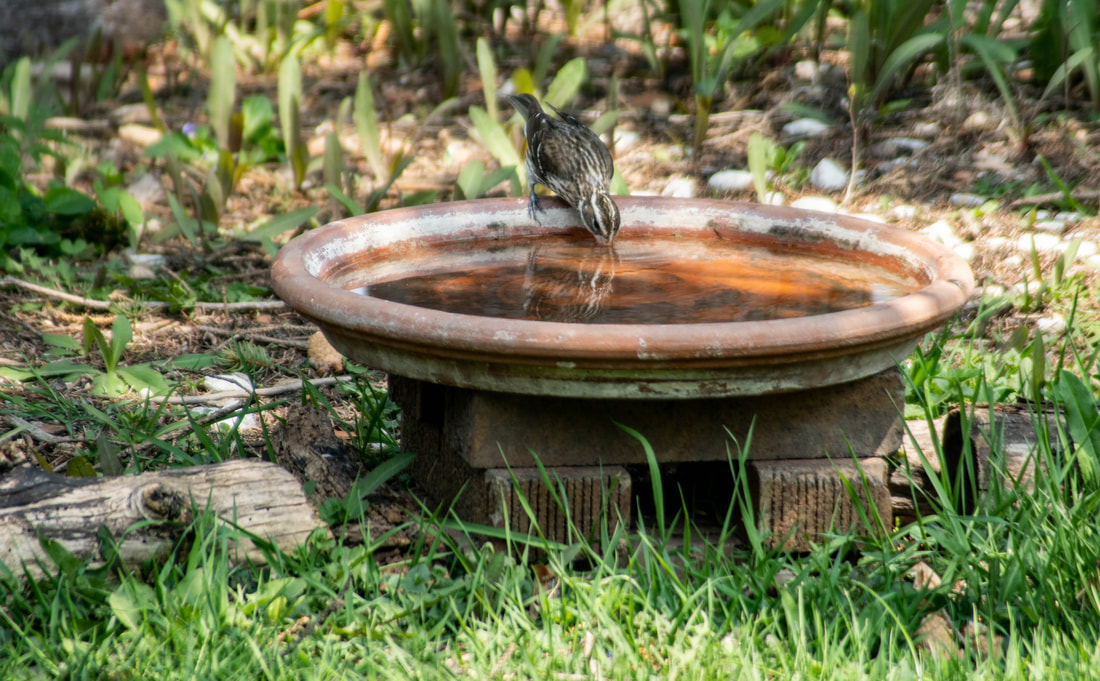
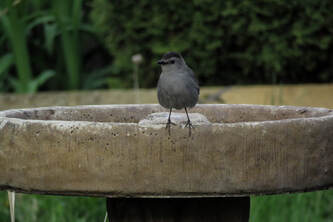
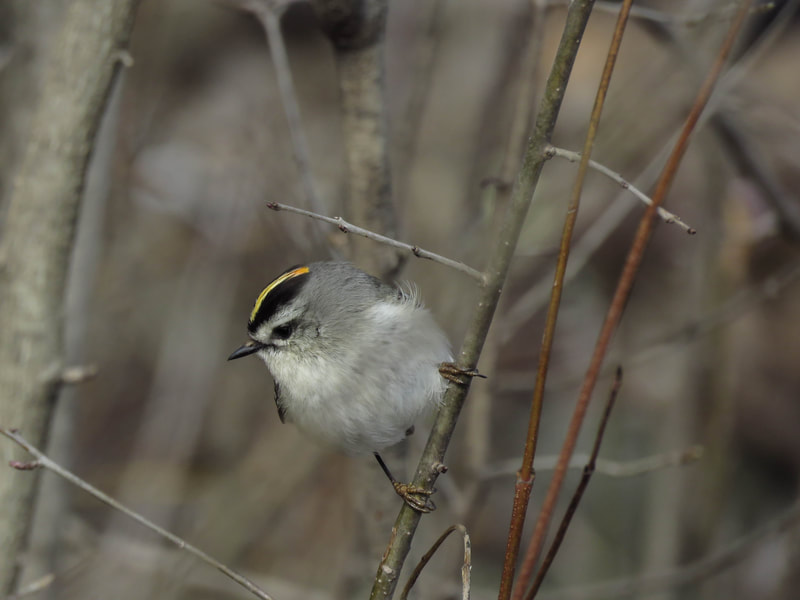
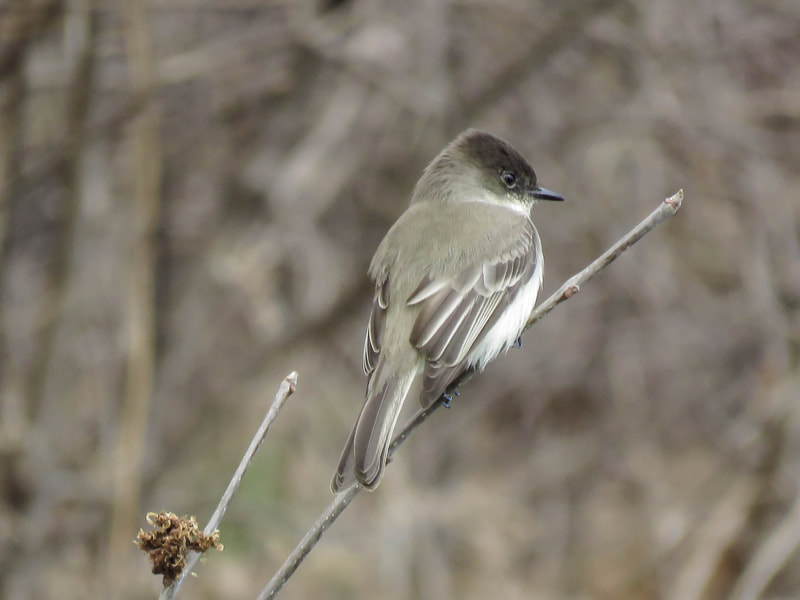
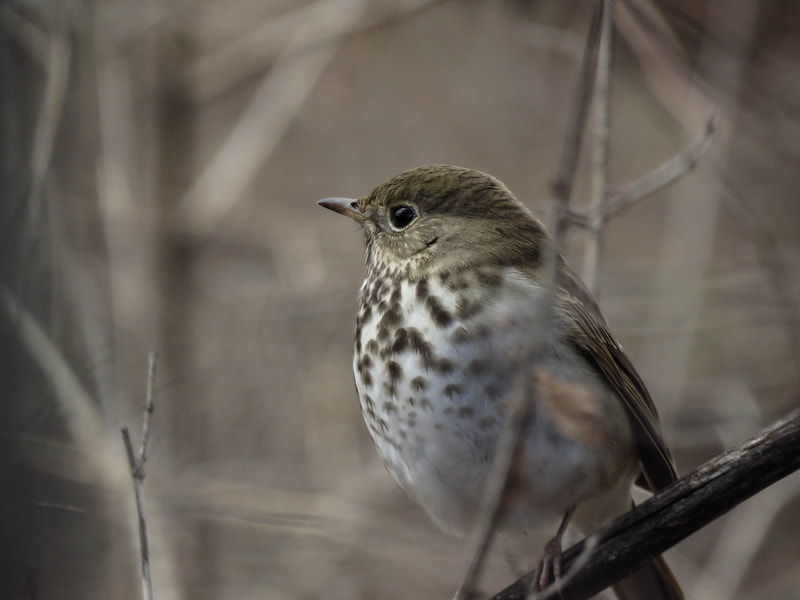
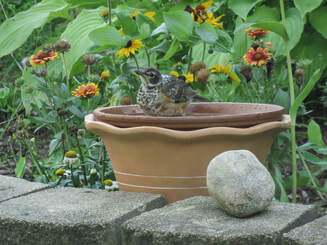
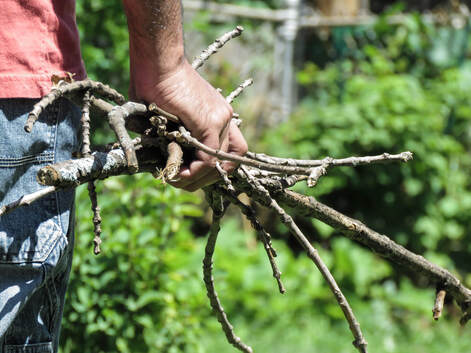
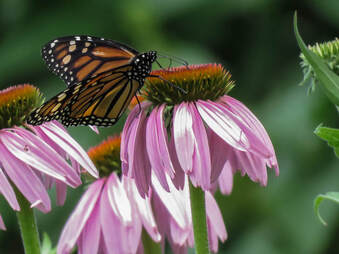
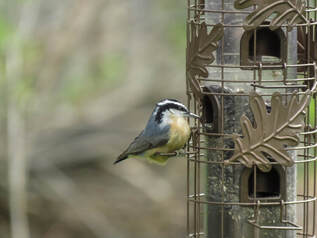
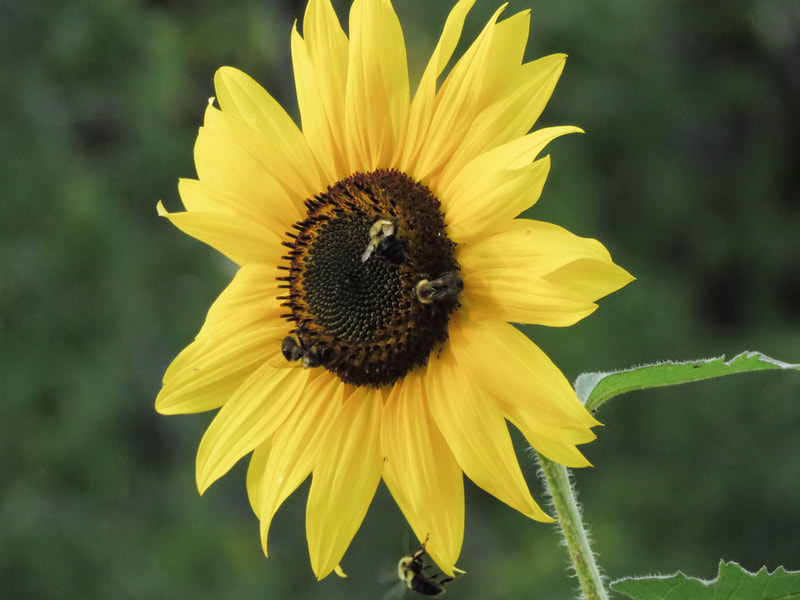
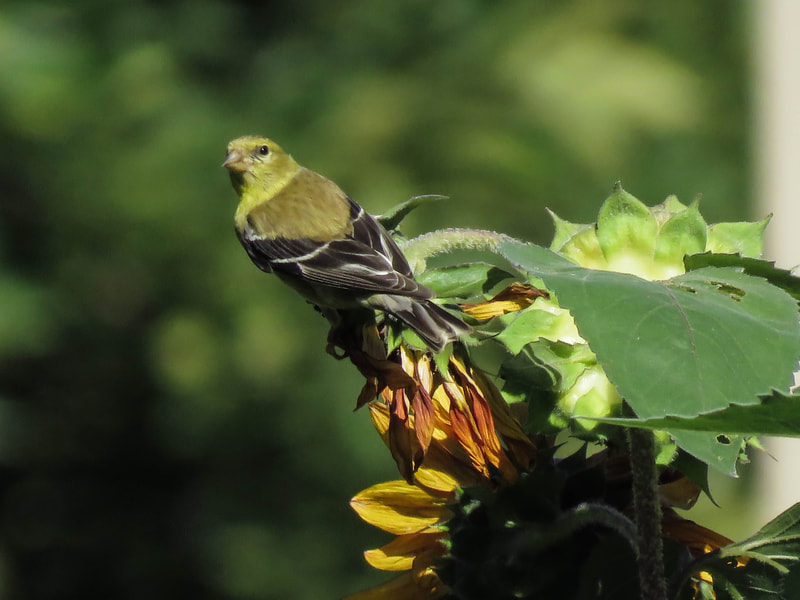
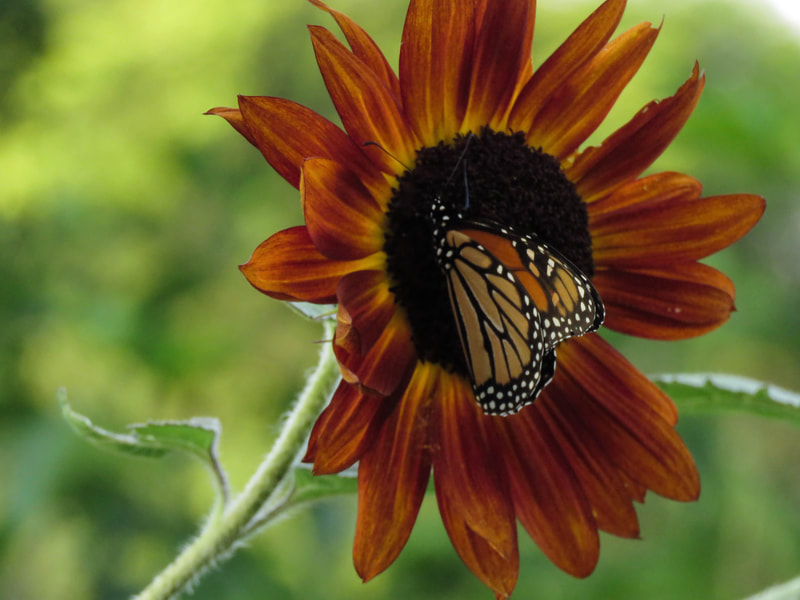
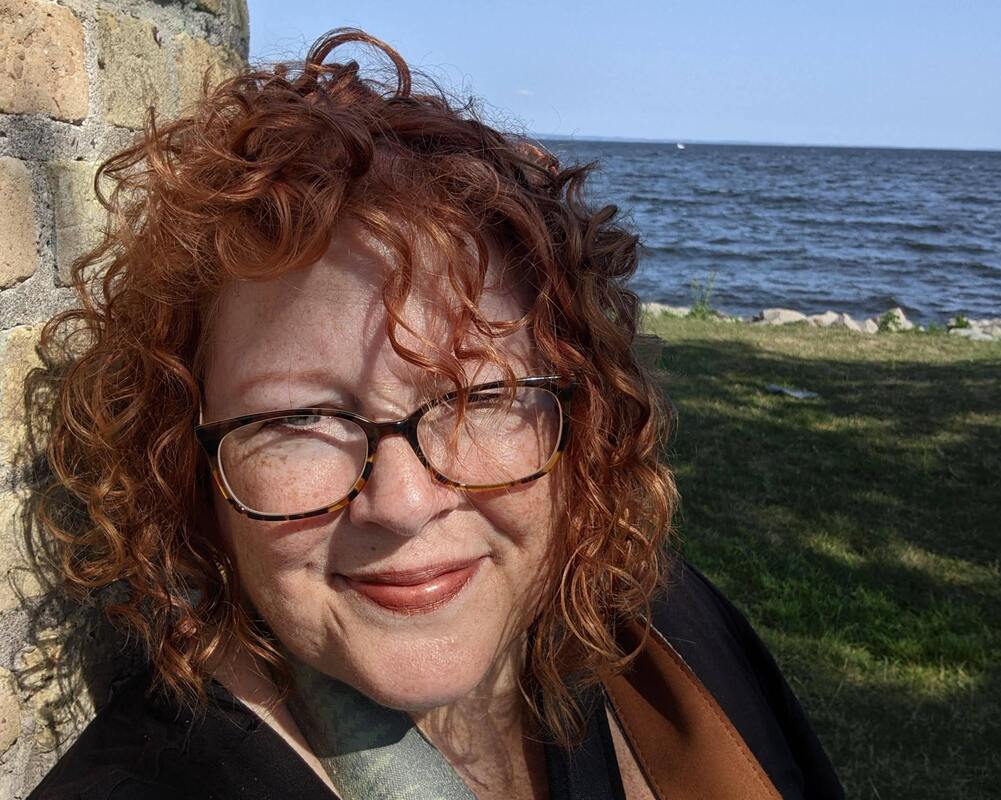
 RSS Feed
RSS Feed
